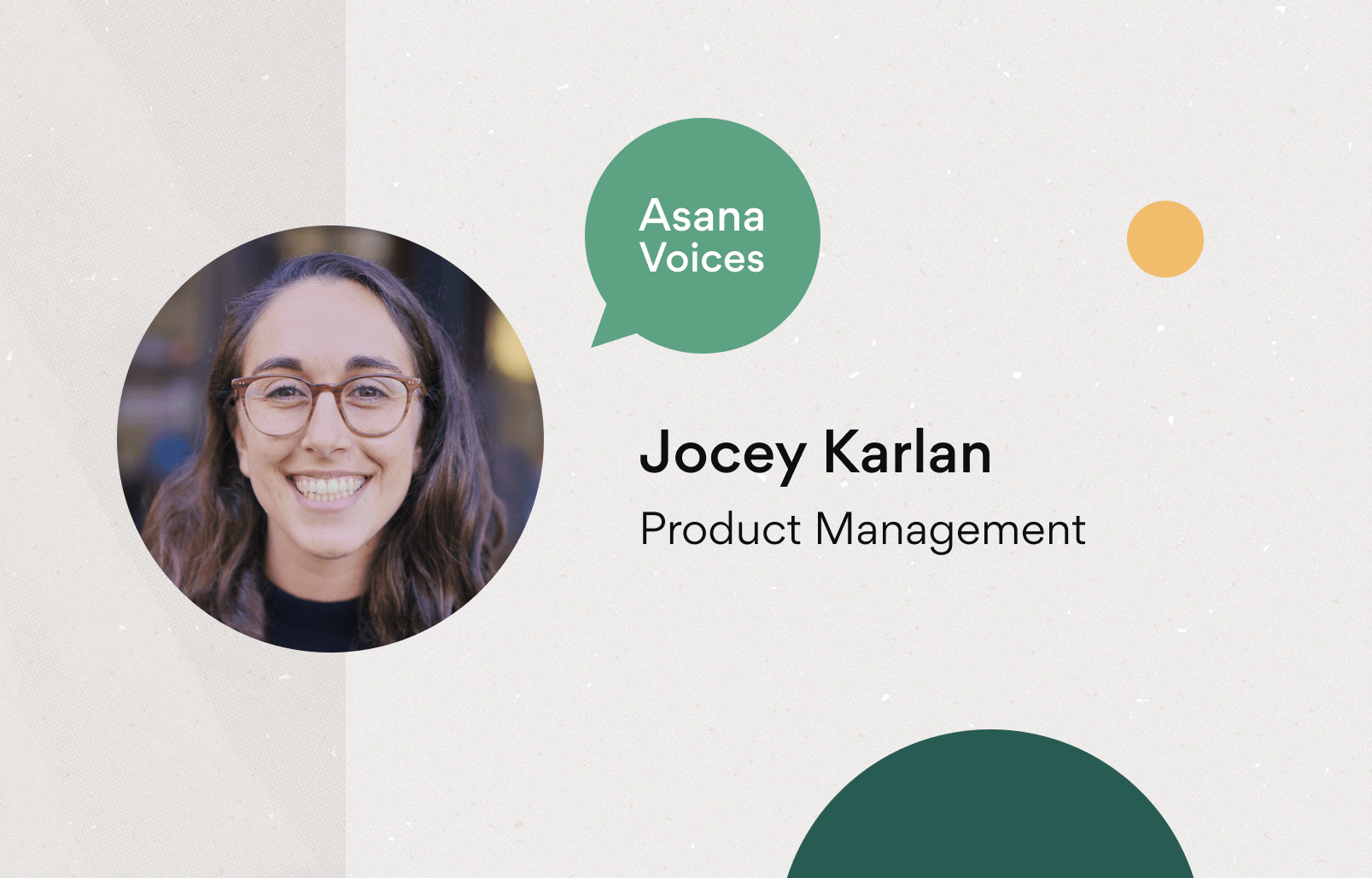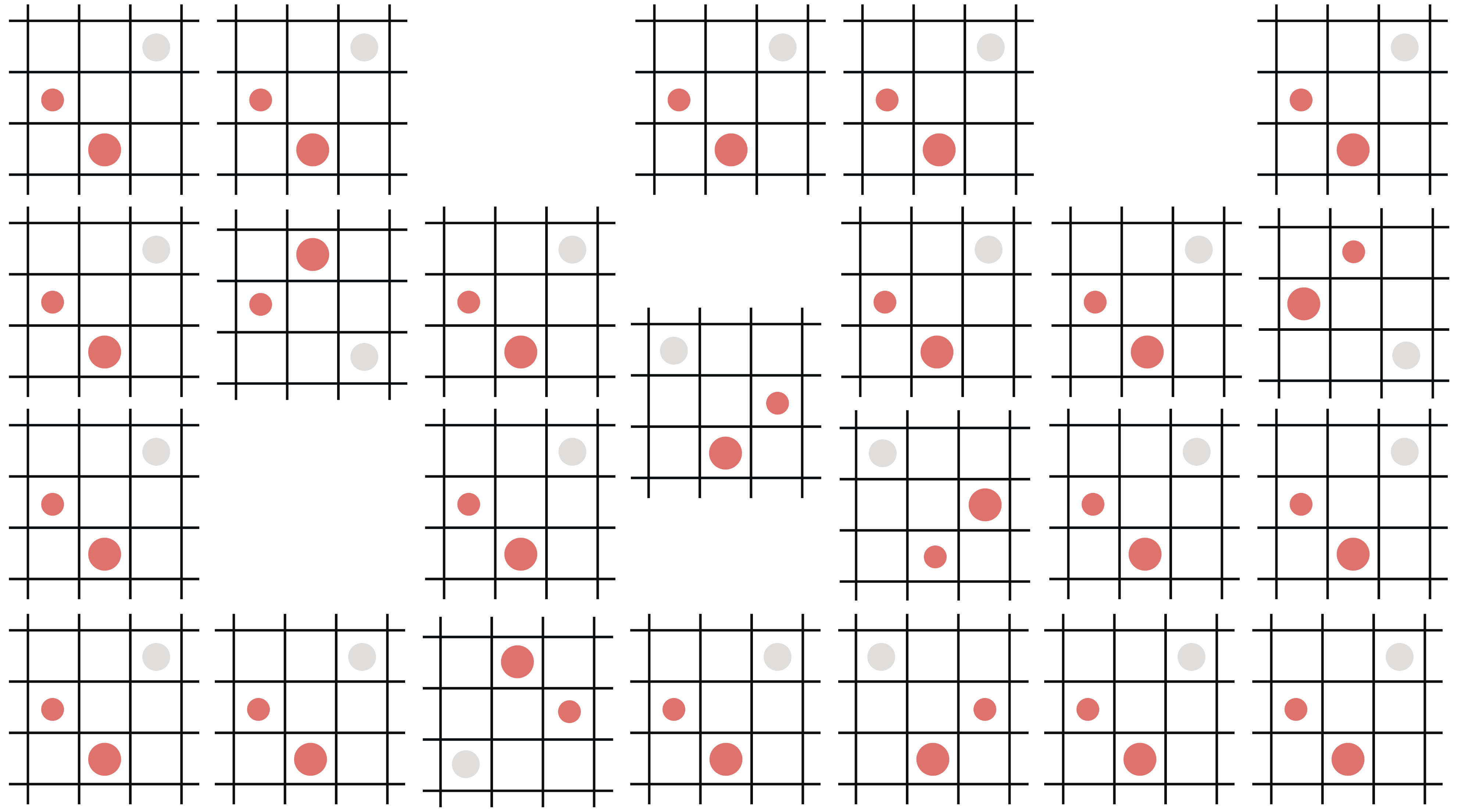Asana Voices: Meet Jocey Karlan, Product Management team

Welcome to our blog series, Asana Voices! With each post, we’ll feature one-on-one interviews with the talented individuals on our global team. You’ll get to know the people inside the company, including the twists and turns in their career journeys, what it’s really like working at Asana, and what they value most about their unique impact on our company, customers, and mission.
Meet Jocey Karlan, a Product Management Lead at Asana, who loves the outdoors, reading, and is a new mom! Jocey first joined the company as an individual contributor on our First Experience Team. Nearly three years later, she now oversees a team of six product managers focused on new user adoption. Take a look inside Jocey’s career journey and learn about the career growth that she’s experienced, while honing in on her core product skillset and becoming a better people manager and leader.
What first attracted you to Asana? What has kept you here?
Before joining Asana, I was on a quest to work for companies that were deeply user driven and mission driven. I wanted to work for companies that were best-in-class product shops where I could learn a ton and really hone my skills. I was driven by Asana’s reputation for building great products and the intellectual stimulation of the problem Asana solves, which I think is really complex and interesting. A lot of what we think about on adoption is straddling both showing how powerful a product is and coming off as really simple, and that just got the geeky side of my brain going.
One of the fears I had coming from a very small startup was that, at a bigger company, I wouldn’t get a chance to wear all the hats and dabble in all the areas that interested me. That was a huge misconception that Asana disproved. I’m now surrounded by expert partners across Data Science, User Research, Design, and Product Management. I’m not owning all of these areas anymore, I’m just able to learn and see things being done really well because the caliber of my team is so impressive.
My learning curve at Asana has also remained really steep. I’ve had incredible opportunities for career growth that I’ve been able to navigate while both honing my core product skillset and becoming a better people manager and leader.
What is something you’re particularly proud of that you’ve achieved at Asana?
I’m proud of establishing the “Land Area,” which is essentially a whole collection of teams focused on user adoption. When I first joined, we had questions like, “Is adoption where we should be investing?” One of the things I’m really proud of is the place at the table that adoption gets on a day-to-day basis. It shows how deeply and strategically we’re thinking about driving user experience in those first 30 days. I feel really proud of the team we’ve established and just how impactful, autonomous, and darn brilliant they are.
How has your career grown since joining the team?
Asana really redefined what a manager’s job is. Alex Hood, Asana’s Head of Product, often says, “We coach through the work.” A one-on-one isn’t just a space to talk about the abstract of a career path, but it’s a space to talk about the work someone’s doing on a day-to-day basis that ladders into that career path. It’s a reminder of how those are deeply interconnected and shouldn’t be separate conversations.
In addition, my view of what management means is a lot more robust now. There’s this value that Asana has around rejecting false trade-offs, and I think I used to have a trade-off in my head that I either get to do product or I get to be a people manager. I think what Asana has allowed me to see is that the best managers are close enough to the work that they are still doing deep product thinking with their teams. They’re also coaching and growing people at the same time through that lens.
What was your state of work before using Asana, and what is your work like now that you have Asana?
I would describe myself as efficiency obsessed. I love moving on things quickly, and I’m really motivated by completing tasks. My life before Asana was all in my email inbox, marking things as unread because they still weren’t resolved. This was private to me, and there was no visibility or clear delineation of ownership, which slowed me down and made me think about the “work about work.”
Right now, as a new mom, I’m on a different schedule because we’re dealing with childcare. I take a chunk of time early in the morning to get work done, and because of Asana, I know what I need to own and can bang that out because it’s so clear.
How do you feel valued at Asana?
There are so many forums to share your work, share what you’ve learned, and be recognized for your successes. I feel really valued at Asana during the moments where I’m bringing a new opinion to the table and am being listened to as I lay out my thinking. Those micro interactions day-to-day make me feel valued. My manager is incredible at helping me reflect on my value with a quick message after a meeting saying, “That was really great. You had a big impact there.”
Asana also has a really good muscle around recognition. We recognize employees with awards that align with our values, and last year I was awarded the Velocity Values award.
How have you been supported and stayed connected to your team through working remotely?
The hardest thing you lose remotely is the little moments of catch-up human time that tend to happen during in-person meetings. There is this pressure that when the Zoom clock starts, so does the work conversation. Before meetings begin, I really try to make time to just talk to each other as humans for a few minutes.
Before I went on maternity leave, my team hosted a surprise virtual baby shower for me with pastries delivered to my house. We’ve also done distanced offsites or outdoor day trips. Moments like this give a really strong human feel to a virtual setting. At the end of the day, we’re all real people outside of these screens.
What are you most looking forward to about working in-person from our offices?
I’m so excited for jamming on a whiteboard! So much of what I love about Product Management is the creative juices that get flowing as you try to solve a user’s problem. Much of that is tied to a visual experience and mapping out how this could work. Now I keep a notebook and a pen in front of me all day and then hold it up to my little camera. Live collaboration unlocks seeing the same thing at the same time so we can co-create together.
If you could give a new Asana one piece of advice, what would it be?
- Talk to users early and often, and let yourself be proven wrong by the user. Let the user’s voice be the lead voice in your head. That’s not to say that we should just build everything that a user asks for, but we should feel the pain a user feels and we should look at that and take those learnings either way.
- Be boundaryless in thinking about the solutions that could best meet a user’s needs. I think one of the things that’s challenging about Asana’s product is that all the pieces are so deeply interconnected. Let yourself look over the wall, because a lot of the opportunities are going to require you to dabble with a bunch of parts of the product. That needs to be okay, even if it’s going to be a little bit harder.
Take the next career-defining step in your journey at Asana! If you’re passionate about helping teams thrive and excited by the opportunity to make a big impact at a fast-growing company where an inclusive culture is non-negotiable, we’d love to talk to you. Apply today to join Jocey on our Product Management team, or check out all our open roles across the globe.

